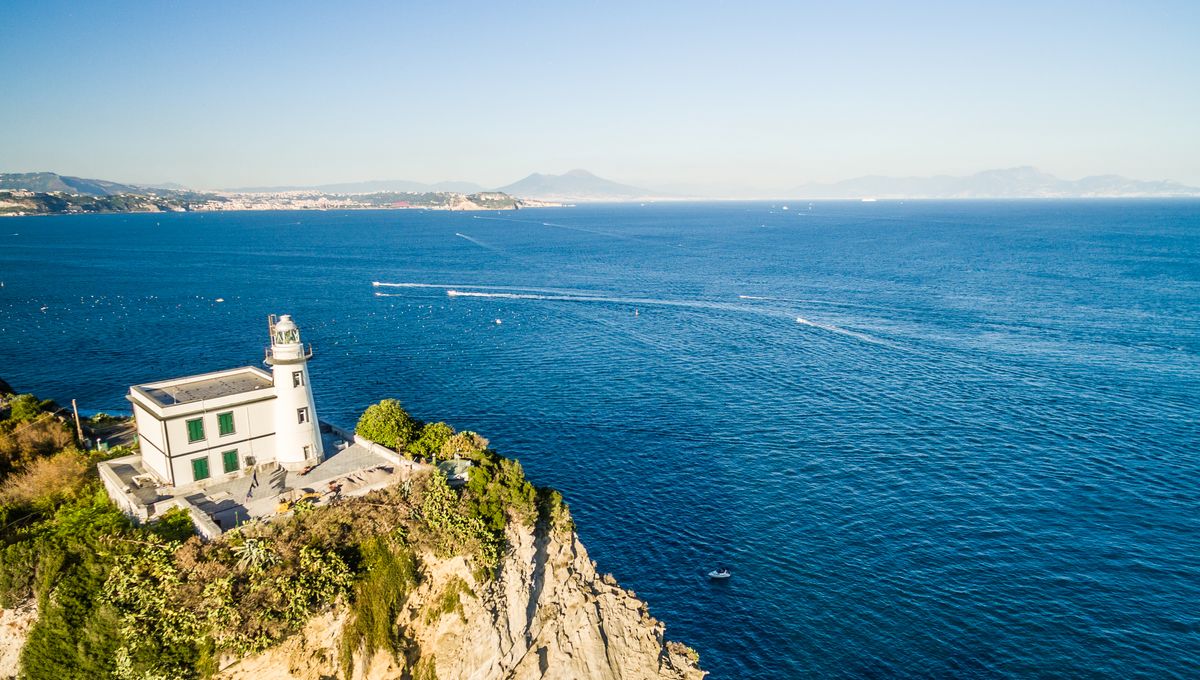
Italy is very geologically active, with many volcanos – some of which have been deadly. However, the largest one doesn’t look like your average volcano at all: Campi Flegrei looks like a depression. It is a caldera with a diameter between 12 to 14 kilometers (7.5-8.7 miles), and part of it is in the sea. It is a supervolcano, and new models suggest that its crust might be getting closer to rupturing, with a chance of a future eruption.
Campi Flegrei hsn’t had an eruption since 1538, but over the last 70 years it has been quite restless. In the 50s, 70s, and 80s it had two-year spikes of activity, and over the last decade, there has been a slow but steady uptick in activity. The coastal town of Pozzuoli near the center of the caldera has been lifted by almost 4 meters (13 feet), a phenomenon known as bradyseism. In April alone, 600 earthquakes were recorded, the highest monthly number on record.
For six years, scientists have employed a model to describe the behavior of Campi Flegrei, both its quakes and the uplifting. The supervolcano has been behaving as the model has predicted. According to this, parts of the volcano’s crust had been stretched nearly to breaking point. This suggests that a rupture is likely in the short term.
“Our new study confirms that Campi Flegrei is moving closer to rupture. However, this does not mean an eruption is guaranteed. The rupture may open a crack through the crust, but the magma still needs to be pushing up at the right location for an eruption to occur,” lead author Professor Christopher Kilburn, UCL Earth Sciences, said in a statement. “This is the first time we have applied our model, which is based on the physics of how rocks break, in real-time to any volcano.”
The earthquakes indicate mounting pressure from below. The pattern of earthquakes suggests that the crust is not responding in an elastic way; instead of stretching and bending, it’s fracturing. These are not the strongest quakes the area has experienced in the last several decades, but the crust is now weaker. The tensile strength – the maximum stress a material can bear – of the crust today is about one-third of what it was in 1984.
“Our results show that parts of the volcano are becoming weaker. This means that it might break even though the stresses pulling it apart are smaller than they were during the last crisis 40 years ago,” added Dr Nicola Alessandro Pino from the Vesuvius Observatory, which represents the Istituto Nationale di Geofisica e Vulcanologia (INGV) in Naples.
The eruption of 1538 took place over 8 days from Monday, September 30. It started with the sea receding and a significant uplift of the ground greater than had been experienced in the past few decades two days before the eruption. Monte Nuovo, the volcanic chimney from which the eruption took place, was fully formed by October 2. Monte Novo is one of 24 craters and volcanic edifices in the supervolcano. Most of them are underwater.
While the model is intriguing, there is a lot we do not know about what is going on. It is very important to find out as much as possible – currently, 360,000 people live on the supervolcano’s roof. Monitoring its movements and modeling possibility is crucial to their safety.
“We cannot see what is happening underground. Instead we have to decipher the clues the volcano gives us, such as earthquakes and uplift of the ground,” Dr Stefania Danesi from INGV Bologna explained.
The work is published in the journal Communications Earth & Environment.
Source Link: Campi Flegrei, Europe’s Supervolcano, Might Be Getting Closer To Rupture